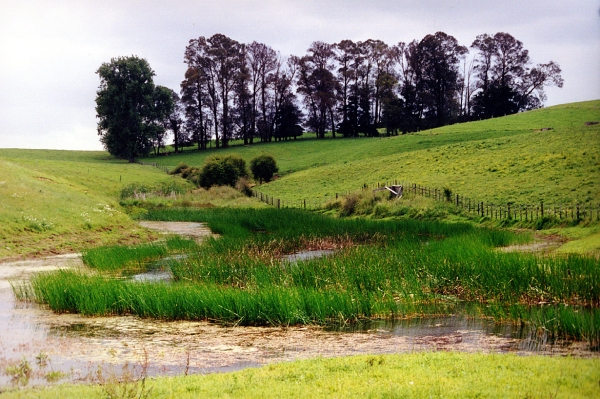Wetlands are important habitats for wildlife and provide critical ecosystem services, such as buffering of floods and removal of sediments, nutrients and other pollutants. Agricultural land development often results in the loss of natural wetlands, but the tide is beginning to turn.
Wetlands are now being recognised as potential tools to help attenuate diffuse contaminant losses in agricultural watersheds. Although knowledge of wetland treatment processes and performance has increased significantly, our ability to scale this up across landscapes and compare its cost effectiveness against other mitigation options is still limited.
NIWA has undertaken a single watershed (Waituna) and a multi-watershed regional-scale investigation of constructed wetlands for control of diffuse agricultural pollution loads in pastoral agricultural areas in the far south of New Zealand. The studies, which were done in association with Environment Southland and DairyNZ, aimed to predict the expected reductions in TN, TP and TSS annual loads resulting from implementation of wetlands occupying either 1 or 2.5 per cent of the area of headwater areas for both current dairying extent and potential full conversion to dairying.
CLUES modelling predicted that, for the six main river watersheds in the study area implementation of wetlands comprising 1 per cent of the area of amenable first order watersheds that intercepted 65-90 per cent of surface and subsurface run-off would reduce overall TN loads from dairying land by 5.2 per cent for both current and potential full dairying; TP load by 9.9 per cent for both current and potential full dairying; and TSS load by 21.3 per cent for current dairying and 15.7 per cent for potential full dairying.
If wetland areas were increased to 2.5 per cent of the amenable area of first order watersheds, overall TN load reductions were estimated to increase to 9.9 per cent for both current and potential full dairying, whilst overall TP load reductions would increase to 16.8 per cent for current and 16.3 per cent for potential full dairying. Overall TSS load reductions increase to 28.4 per cent for current dairying and 20.9 per cent for potential full dairying.
These represent the predicted average annual cumulative mitigation rates for many wetlands over large spatial extents. Challenges involved in retro-fitting constructed wetlands back into the highly modified drainage network, whilst retaining efficient drainage of upstream lands, and estimated costs and benefits of wetland construction are also discussed in the studies.
Agricultural wetland.
External collaborators: David F. Burger, DairyNZ; Andy Hicks (Hawkes Bay Regional Council, formerly Environment Southland), Katrina Robertson, James Dare, Environment Southland



